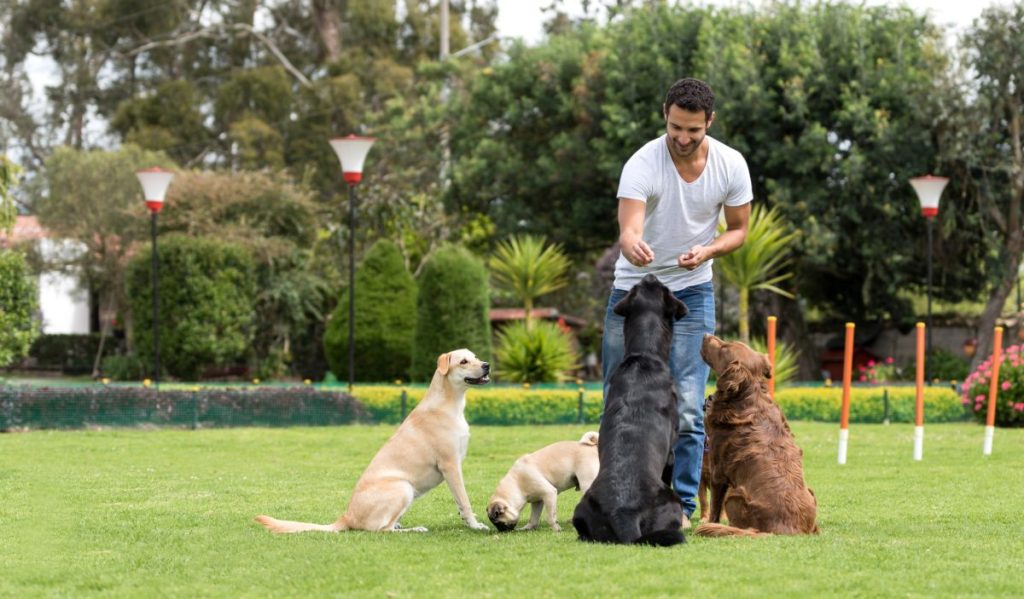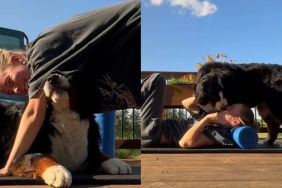A good dog trainer can help you with anything from teaching basic commands to dealing with problem behaviors such as aggression or separation anxiety. That said, you’ll need to do some investigating to make sure you get a good one. Trainers aren’t licensed or regulated, and anyone can hang out a shingle declaring himself a professional dog trainer or behaviorist.
How to find a dog trainer
The best way to find a skilled trainer is through word of mouth. Ask your vet, the breeder or shelter where you got your dog, the local humane society, or even dog parents in your neighborhood for recommendations. If you spot a dog at the park with stellar obedience skills, ask their parent for a reference.
You can also search for trainers in your area on the Association of Pet Dog Trainers (APDT) website and ask if they teach classes. The APDT doesn’t screen members, but it encourages them to use humane methods. It also nudges members to keep up with the latest in training and behavior through both classes and conferences.
4 signs of a good dog trainer
Once you’ve got a few recommendations, you’ll want to suss them out a bit. Here are some things to look for:
1. The trainer uses treats, praise, and games to teach. These methods are considered more effective — not to mention more humane — than physical punishments such as jerking the leash, shaking the dog by the scruff, rolling the dog onto his back, and any other technique that frightens or hurts the dog.
2. The trainer has education and experience in pet dog training. Seems obvious, but it’s not required in order to call yourself a dog trainer, so it’s worth double-checking.
3. The trainer is a good communicator with humans as well as canines. They’ll be teaching you how to train, so ideally your trainer will have people skills as well as dog skills.
4. The trainer specializes in certain problem behaviors. If you’re dealing with a specific issue, such as anxiety or aggression, look for a trainer with a track record of helping dogs with that problem.
If you think you’ve found a good trainer, ask if you can sit in on a class and watch the trainer in action. Or, if you want individual training sessions in your home, ask for a consultation so you can see how the trainer interacts with your dog.
How much dog trainers cost
Training costs differ based on several factors, including where you live, the type of training, the length of the program, etc. Private lessons can vary from $40 to $250 per session. Group lessons can start at $20 to $25 per session. For a set of classes that lasts six to eight weeks, that’s around $120 to $600 total. Your local shelter or pet store may offer subsidized programs for the general public and/or people who are adopting from the shelter.
Group versus private training
Debating whether you should spring for one-on-one training sessions? For most dogs, group classes are actually the better choice. They let your dog get comfortable being around lots of different people and dogs, which is essential for teaching dogs (especially puppies) how to be safe and friendly with both canines and humans. Group lessons also teach you how to train by watching how other people do it — this is a big boon for novice dog owners — and they give your dog the chance to practice paying attention to you when there are all kinds of distractions around. Plus, group lessons are usually cheaper.
The one case where you’d be better off with private training is if you’re dealing with a specific problem, such as separation anxiety. Group classes don’t allow much time for one-on-one attention, but a private lesson lets the trainer evaluate your dog and come up with a tailored training plan.
You may also want to go with private sessions if you can’t make a regular class. They usually meet weekly for about an hour and run for a few months.
Trainers can be a huge help, whether you want to teach your dog the basics or you’re dealing with a serious behavior problem. However, since dog trainers and behaviorists aren’t regulated, you’ll need to do a little sleuthing to find a good one.









